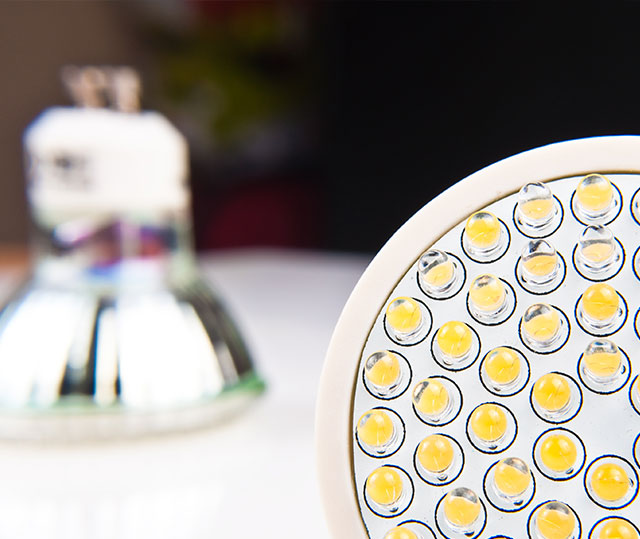

Lighting
For many organizations, lighting accounts for a significant percentage of their energy use.
In this Section
Lighting
For many organizations, lighting accounts for a significant percentage of their energy use. However, there are a variety of options for interior and exterior lighting that can reduce your energy use and save you money over the longer term.
Indoor Lighting
Most businesses have fluorescent tube lighting. All fluorescent tube lighting has a "T" on the label, which tells consumers they are a tube option, and a number that refers to how wide the bulb is in eights of an inch. Traditional light fixtures were based on a "T12" system, but there are more energy-efficient options:
- T8s are 20-30% more energy efficient than T12s and maintain their rated light output longer. T8s share the same tube length and configuration as T12s, so it's a relatively easy upgrade. High-performance T8s are also available.
- T5s are the next generation of fluorescent tube lighting. High-performance T5s produce twice as much light, which can allow you to use fewer bulbs. However, the transition to a T5 configuration can be more involved because the tubes and fixtures are smaller.
You should contact an expert to ensure these options make sense for your business and to have them installed safely. For more information on the types of lighting commonly found in homes, visit the page on lighting for households.
Exterior Lighting
Many building owners need to light large areas of outside space, such as a parking lot or storage areas. Proper lighting and safety is paramount in outside locations, but there are options that can provide more light while using less energy.
High-Pressure Sodium - These fixtures are approximately four to five times more powerful than traditional incandescent bulbs. As a result, you need far fewer lights and can reduce your energy costs for outdoor lighting. Additionally, high-pressure sodium fixtures last 10 times longer, with a typical lamp life of 18,000 to 24,000 hours, versus 1,000 to 2,500 for an incandescent bulb. These lights require specialized installation and should be disposed at a hazardous material facility as they contain mercury.
Metal Halide - Metal halide lights are three to four times more powerful than traditional incandescent bulbs and last much longer, with a lifespan of 10,000 to 15,000 hours. While not as energy-efficient as high-pressure sodium, metal halide lights are typically chosen when light quality is a particular concern, as they provide a "whiter" light relative to the yellow glow of high-pressure sodium. These lights must also be disposed at a hazardous material facility as they contain mercury.
Available Program

The takeCHARGE initiative has a program for commercial fluorescent tube lighting. This program will help offset the cost of upgrading to a T5 system or a high-performance T8 lighting system. For more information, visit the takeCHARGE website.
In this section
Codes, Standards, and Certifications
Building Envelope
Lighting
Heating, Ventilation and Air Conditioning
Green Leases

